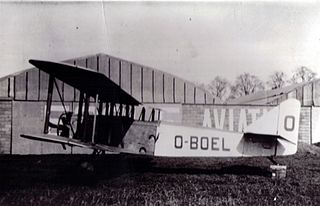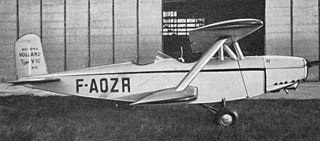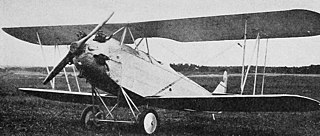Related Research Articles
The Stampe et Vertongen RSV.22 was a training biplane produced in Belgium in the 1920s.

The Stampe et Vertongen RSV.32 was a trainer aircraft produced in Belgium in the early 1920s. Designed originally for the Stampe et Vertongen flying school, the Belgian Air Force became a major operator of the type, where it became the first aircraft of entirely Belgian design and manufacture to enter service. Many others were purchased by flying clubs and private owners. No RSV.32 was in existence by the end of World War II.
The Potez 27 was a French reconnaissance biplane first flown in 1924. 175 were operated by the Polish Air Force, most built in Poland by PWS under licence. Others went to Romania, where they were also used as light bombers.
The Caudron C.251 Et-2 was a French tandem seat, open cockpit biplane designed as an intermediate trainer and built in 1931. It did not go into production.

The Caudron C.140 was a French tandem cockpit sesquiplane designed in 1928 as a combination of liaison aircraft and observer and gunnery trainer.

The Caudron C.67 was a simple single seat biplane with a low powered engine. It was built and flown in France in 1922.

The Aviméta 88 was an all-metal French two-seat reconnaissance-fighter or heavy fighter tested in 1927.

The SET 2 or Proto-SET 2 was a 1920s Romanian prototype reconnaissance and day-bomber aircraft.
The Peitz 101, aka Peitz Avionette, was a French amateur-built, all-metal light aircraft, first flown during the winter of 1931–32.

The Morane-Saulnier MS.350 was a French aerobatic trainer flown in 1936. Only one was built but it had a long career, flying post-war until the 1960s.

The Volland V-10 was a French two seat, low-powered biplane notable for its extreme stagger. It first flew in 1936 and appeared at the Paris Aero Salon that year.
The Potez 24 A.2 was a mid-1920s French biplane intended to replace the Potez 15 as an army observation aircraft. The further improved and larger Potez 25 was preferred for production.

The Aerial Engineering Corporation Standard 6W-3 was a commercial transport modification of the US Standard J-1 biplane military trainer aircraft, with new wings, engine and accommodation for four passengers. First flown in 1925, it was built in small numbers.
The Morane-Saulnier MS.152 was a French multi-purpose aircraft built in 1928. It did not go into production.

The Svenska Aero Falken was a Swedish trainer aircraft. Two were built, with different engines and were used by the Swedish Air Force.

The Day A Special, named Errant, was designed in the U.S. by Charles Healey Day, as a safe, easy to fly tourer, for two sitting side-by-side. In 1931 the designer and his wife flew Errant on a seven month world tour.
The Itoh Emi 13 was a two seat Japanese trainer, designed for the Itoh flying school and introduced in two versions in 1920 and 1921.
The Vought V-100 Corsair Junior was an attempt to produce a cheaper, multi-purpose, export version of the Vought O2U/O3U observation aircraft it had produced for the United States Navy. It did not sell, and only the prototype was built.

The Huff-Daland HD.8A was a small civil transport biplane carrying two passengers built in the U.S. in 1922. The otherwise identical HD-9A offered an alternative engine.
The Mulot AM-20 was a Belgian single seat aerobatic trainer displayed at the 1937 Brussels Salon. Two were built.